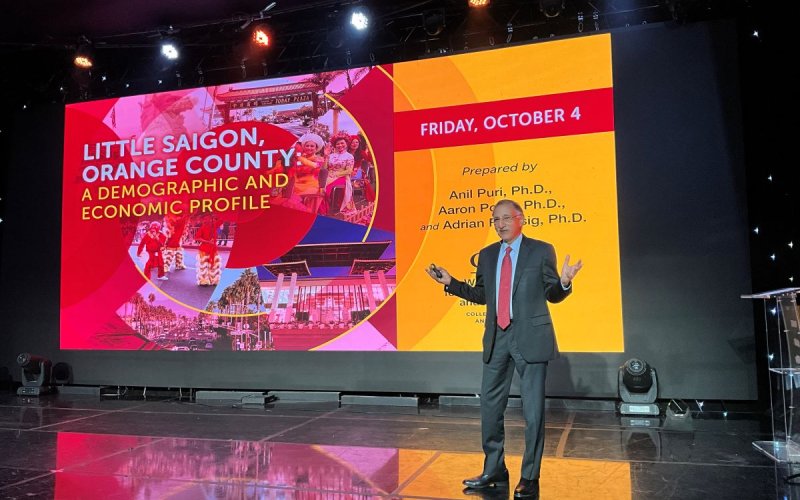
The largest and oldest Vietnamese community in the United States is Little Saigon, encompassing parts of Westminster, Fountain Valley, Garden Grove and Santa Ana.
To better understand the phenomenon of the unique ethnic enclave that is Orange County’s Little Saigon, Cal State Fullerton College of Business and Economics economists Anil Puri, Aaron Popp and Adrian Fleissig have released a first-of-its-kind report on the demographic and economic profile of this community. The study, which was highlighted at an Oct. 4 event, documents the progress made over the past 50 years and reports that this ethnic enclave is likely to expand and thrive in the future.
The Demographics of Orange County’s Little Vietnam
Puri, Fleissig and Popp noted that Little Saigon’s population has grown faster over time than that of Orange County as a whole, largely driven by immigration from Southeast Asia.
Though only 52.8% of Little Saigon residents are even of Asian descent, the concentration and influence of this demographic is strong enough to exude a powerful defining impact on the neighborhoods.
“Little Saigon has a weaker labor market than Orange County as shown by key labor market indicators,” the Titan economists explained.
“The unemployment rate of Little Saigon was 6.7% in 2022, higher than Orange County’s 5.4% rate. The unemployment rates differ within Little Saigon. The highest unemployment rates were in the southern parts east of Mile Square Regional Park and the neighborhood around and south of the Asian Garden Mall where unemployment rates are above 15%. The lowest unemployment rates are in the northern part of Garden Grove and along Westminster Avenue in the eastern part of Little Saigon where unemployment rates are below 5%.”
There is a lower employment-population ratio in Little Saigon, representing different demographic factors such as more elderly residents and more stay-at-home parents and grandparents living in multigenerational housing situations.
“Workers who live in Little Saigon are more likely to be employed in service- and production-related occupations and less likely to be in white-collar work,” the economists said.
“This difference may be caused by the fact that fewer Little Saigon workers have a college degree, which is more likely to be required for white-collar jobs. As later sections in our report show, manufacturing employment within Little Saigon’s boundaries has fallen substantially since 2002, forcing many of Little Saigon’s manufacturing workers to commute out of Little Saigon for work.”
A little under 40% of Little Saigon workers are employed in the services sector and about 17% work in manufacturing.
About 7% are self-employed and 81.8% work in the private sector.
Read more in CSUF Business News.